Post processing toolbox for 2d and 3d DNS and experimental results of turbulent reacting flows
Example for the investigation of a 2 dimensional non-premixed, turbulent H2/air flame.
-
load the data of the example flame "flame" in your workspace:
input: load flame -
First define and locate the flamefront:
-
e.g. along the stoichiometric isolevel of the mixture fraction Z at Z=0.5 between the upper boundary Z=0.9 and the lower boundary Z=0.1:
[og,ug]=<a title="flamefront" href="index.php?site=lss&id=106&lang=de">flamefront</a> (X,Y,Z,0.5,'abs',0.9,0.1);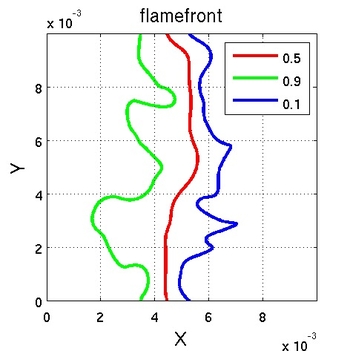
-
or along the crestline of temperature values
(higher than e.g. 60% of the maximum temperature)[CREST]=crestline (X,Y,temperature,0.6);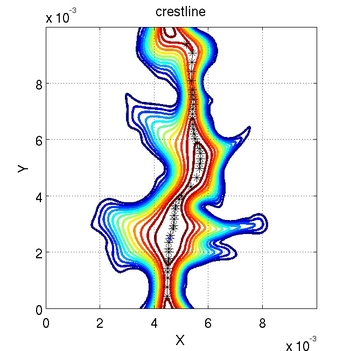
-
-
Second compute or extract important variables along the flamefront
-
e.g. extract the temperature along flamefront defined by Z=0.5;
input 'yes' to obtain the figure: [xiso,yiso,siso,tempiso,fp3]=extract (X,Y,Z,0.5,temperature,'abs','yes');
-
compute strainrate along flamefront:
[siso,strnff,meanstrn,strtff,meanstrt]= <a title="strainratelev" href="index.php?site=lss&id=248&lang=de">strainratelev</a> (X,Y,x_velocity,y_velocity,Z,0.5,'abs'); -
compute strain rate in the whole field on order to prepare the extraction along linear or not linear cuts
[strn,strt]= <a title="strainrateall" href="index.php?site=lss&id=246&lang=de">strainrateall</a>(X,Y,x_velocity,y_velocity,Z);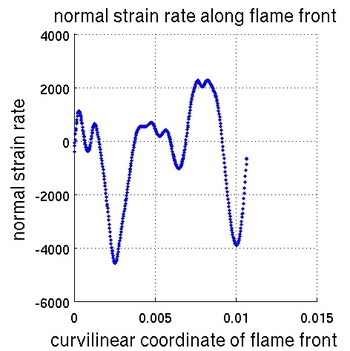
-
-
Then draw linear cuts through flame front between boundaries defined above
- extract variables for example temperature along these cuts
[XMIN,XMAX,YMIN,YMAX,XX1,YY1,VV1,VV2,VVG]=lincut (X,Y, 0.0055,0.005,0.9735,-0.2285,Z,temperature,0.00005,0.5,'abs',0.9,0.1);
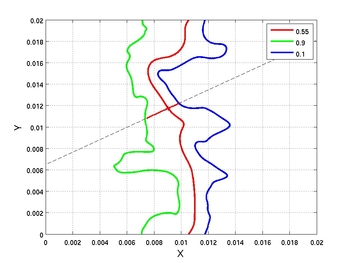
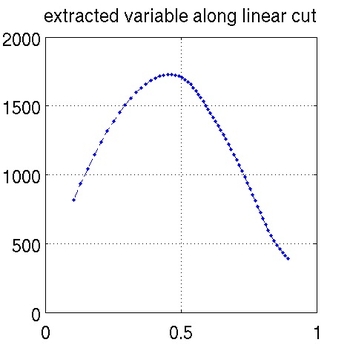
-
compute integral value of temperature along the cut
intvar=<a title="intcutlin" href="index.php?site=lss&id=170&lang=de">intcutlin</a> (X,Y,0.0055,0.005,0.9735,-0.2285,Z,temperature,0.00005,0.5,'abs',0.9,0.1); -
compute flamethickness along linear cuts, use batch modus
[sisok,flthick,maxfl,minfl,meanfl]=<a title="flamethicklinb" href="index.php?site=lss&id=112&lang=de">flamethicklinb</a> (X,Y,Z,0.5,'abs',0.9,0.1);
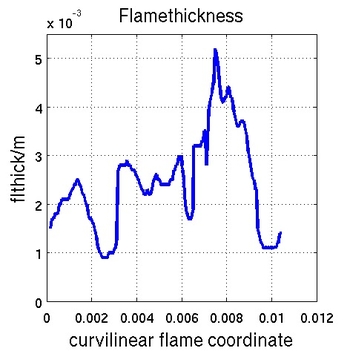
-
Then draw nonlinear cuts through the flame front
[XMIN,XMAX,YMIN,YMAX,XX1,YY1,VV1,VV2,VVG]=<a title="nonlincut" href="index.php?site=lss&id=176&lang=de">nonlincut</a> (X,Y,0.0046,0.0034,Z,strn,0.00005,0.5,'abs',0.9,0.1);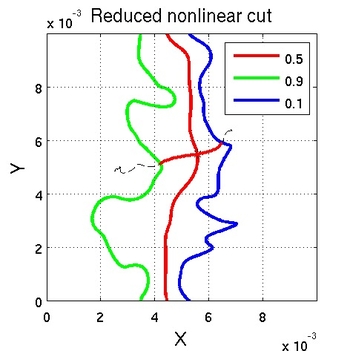
- extract variables for example strain rate along the cuts
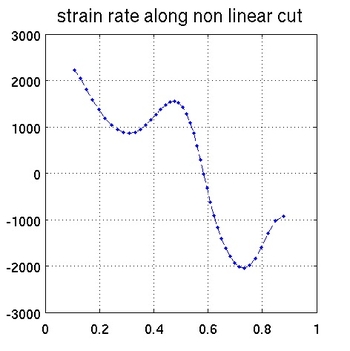
-
Then do some statistical investigation
-
plot correlation between extracted variables of interest, e.g. flamethickness and strain rate:
<a title="correlationgen" href="index.php?site=lss&id=226&lang=de">correlationgen</a>(flthick, strnff)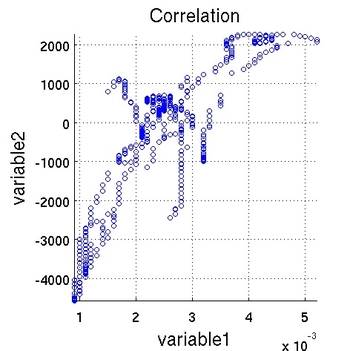
-
compute mean and rms values of variable e.g. temperature conditioned on Z
[v,m,rms]=<a title="condmeanfilt2" href="index.php?site=lss&id=218&lang=de">condmeanfilt2</a> (X,Y,Z,temperature,0.01)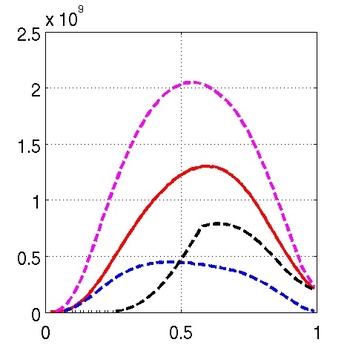
-
if you have statistics toolbox compute moments and pdf of for example velocity distribution
[STATVAR]=<a title="varstat" href="index.php?site=lss&id=228&lang=de">varstat</a>(x_velocity)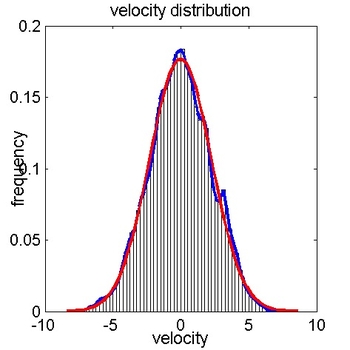
-
Investigate the velocity field
<a title="streamsliceplot2" href="index.php?site=lss&id=254&lang=de">streamsliceplot2</a> (x_velocity,y_velocity,X,Y) <br><img style="display: block; margin-left: auto; margin-right: auto;" title="streamslice2" src="index.php?id=576&width=350&height=351&nonactive=1&lang=de&site=lss_media" alt="streamslice2" width="350" height="351">
-